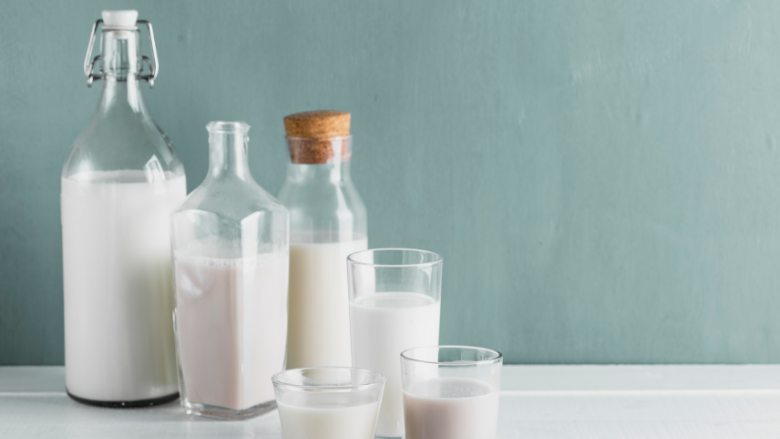A recent survey of French animal and human milk and infant formulas has revealed a concerning presence of titanium dioxide—a controversial food additive that is banned in the EU due to its suspected toxicity, and which can also be found as an environmental pollutant due to its use in other products and industrial applications. The researchers question whether infants are at particular risk from dietary exposure to titanium dioxide.
The study, published in Science of the Total Environment, was conducted by the French National Institute of Agricultural Research (INRAE), in collaboration with SOLEIL Synchrotron, Lariboisière Hospital in Paris, and the National Center for Scientific Research (CNRS).
Is Titanium Dioxide Safe in Foods?
Titanium dioxide is classified as a possible carcinogen when inhaled by the World Health Organization’s International Agency for Research on Cancer (WHO’s IARC), although its harms to human health when ingested are more debated. Some in vivo and in vitro studies have shown titanium dioxide to be genotoxic and cytotoxic, and rodent studies have suggested oral exposure may lead to cancer; gut inflammation; and neurological, cardiovascular, and lung diseases. Also, in studies where rodent newborns were breastfed by mothers exposed to titanium dioxide nanoparticles, multiple organ alterations and severe outcomes were described, including impaired memory and learning, reduced growth, and decreased survival.
On the other hand, some studies have supported the safety of titanium dioxide as a food additive, and the Joint Food and Health Organization of the United Nations (FAO)/WHO Joint Expert Committee on Food Additives (JECFA) have not been able to specify an acceptable daily intake level for the additive due to a lack of certain data. Moreover, in 2022, an EU court annulled the European Commission’s classification of titanium dioxide as a carcinogen.
The additive is still permitted in other regions of the world, such as the U.S., although some states have moved to prohibit the sale of foods containing titanium dioxide.
French Scientists Find Titanium Dioxide in Milk and Infant Formula
The researchers sampled human, animal, powdered, and infant formula milk samples. Human milk samples were collected from a milk bank and originated from ten women in the Paris area. Animal milk samples included donkey, goat, and cow milk, and were sourced from farms around France, as well as the INRAE Experimental Unit Le Pin. Powdered milk (raw or skimmed cow milk, goat milk) and infant formula (for ages 0–36 months, thickened or not thickened) were purchased online and at retail, and included both organic and non-organic varieties.
Samples were analyzed using single-particle inductively coupled plasma mass spectrometry (spICP-MS) and by synchrotron radiation-based X-ray fluorescence.
Titanium dioxide particles were discovered in 100 percent of animal milk samples (fresh and powdered) and 83 percent of infant formulas. Concentrations in animal milk ranged between 16 million and 348 million particles per liter (ppL), while infant formula concentrations ranged between six million and 3.9 billion ppL.
Importantly, as titanium dioxide was found in all human milk samples, the findings suggest that ingested titanium dioxide particles can pass into mammary glands. However, levels of titanium dioxide in the samples varied greatly between donors.
Animals and humans may be exposed to titanium dioxide as a pollutant in the environment, leading to milk contamination. For example, animals may be exposed to it through air, water, and soil. Humans may have additional routes of exposure, such as cosmetics, toothpaste, foods, pharmaceuticals, industrial activity, traffic and road dust, and proximity to soils and crops treated with titanium dioxide nanoparticle fertilizers.
The researchers call for large-scale epidemiological studies to address human milk and animal milk levels of titanium dioxide in the population and livestock, to address correlations between newborn health and development, and to investigate long-term health effects during adulthood.


Dining and Cooking